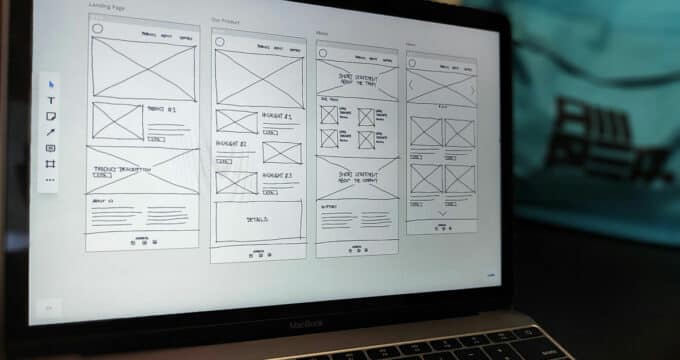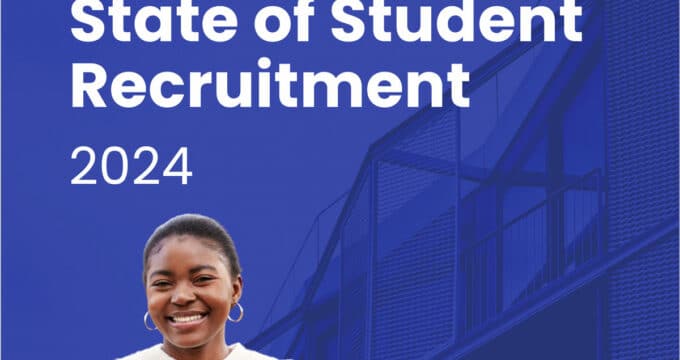How can institutions improve international student conversions from admission to enrolment?
- A featured panel at EAIE 2023 highlights the key conversion opportunity in the often months-long interval between admission and enrolment
- The panelists emphasised the complexity of the student decision making process and the many factors that are involved, not all of which are under the control of the institution or school
- They also stressed the importance of the student voice, of offering students multiple points of contact, of authenticity and transparency, and, ultimately, of building student attachment and cultivating a sense of belonging and community
We can all picture the enrolment funnel in our mind's eye: attention to inquiry to admissions offer to enrolment and then graduation and, ultimately, alumni and graduate outcomes.
Speaking at the EAIE 2023 annual conference in Rotterdam this week, panelists Cornelius den Hartog, co-founder of the student social platform Goin'; Mats Engblom, marketing specialist at the University of Helsinki; and Declan Coogan, associate director of recruitment for Trinity College Dublin, shared some important frontline insights on the things that most impact student decision making and conversion in that critical period after the student receives an offer of admission.
That key stage in the funnel, explains Mr den Hartog, "Is the point at which the student is in the driver's seat. They can make the decision on where they want to go, and your hands are tied." One of the reasons for that, he adds, is that there "this huge gap between this super exciting admissions letter and like six-seven months of, well nothing – maybe some emails or a webinar. That period is really intense for students and that is also the time where we really need to focus on conversion."
Mr den Hartog went on to describe a cocktail of factors that influence conversion for admitted students, including financial factors, academics (e.g., ranking, programmes), social factors, student support, geography (e.g., location, weather), and graduate outcomes (e.g., employability). Of those, he argues that social factors and support are the two that are most directly under the institution's ability to influence in that post-admission period.
Social factors include word of mouth, community, social proof, and the sense of belonging or attachment that the student begins to establish after admission. The broad category of support, on the other hand, relates to things like responsiveness and effectiveness in communications with students, quality staff, authenticity, and events for incoming students.
Part of what this reflects is that there is not just one point of contact that is going to drive conversion for offer holders. "There is not just messenger; rather there are many messengers that can really help you and ensure that students feel well supported on their way," says Mr den Hartog.
Barriers to conversion
Mats Engblom described a great initiative through which his team regularly surveys students who did not follow through to study at the University of Helsinki after having been admitted. He explained that the findings were pretty consistent year after year, and that they show that the top factors in admitted students deciding not to study at the university include financial factors, including cost of living and availability of scholarships. "Money is a big reason," he added. If you can't afford it then you can't come." He also noted programme-related factors as a big hurdle to conversion, including rankings and programme availability.
Mr Engblom went on to describe how that survey process has also led to some important improvements at the university. "One year we had quite a few students who said they didn't feel welcome during the admissions process. So we talked about that with the admissions team, they made some changes, and that [answer disappeared] from the survey in the next year]."
The session highlighted another important lesson from Helsinki, which was how the university engages its current students to provide an authentic contact for admitted students who had not yet enrolled. "That student-to-student connection is key," he said, emphasising that the student voice means that, "It's not just you and your colleagues answering emails and telling about how fabulous your university is." He pointed out as well that in many cases students will be more comfortable to ask questions of a peer, rather than staff member from the institution or school. "There is an element of losing control [of the conversation]," he acknowledged, but those values of transparency and authenticity are so important that the university finds the trade-off very worthwhile. "Just trust your students to do the work if they want to, and they will really help you."
The funnel is not a straight line
Declan Coogan added that their internal survey data at Trinity College Dublin reflects a broader industry trend in that students apply, on average, to several different institutions in three countries before making their final choice on where to study. There are clearly a number of factors in play, including rankings and geography and costs. But the surveys also show that there are a lot of intangible that lead the students to choose Trinity College Dublin, including many that put it down to "gut instinct" or a feeling of belonging or good fit. "We're really starting to question our own assumptions about what is informing international student recruitment," he said.
That shift includes how Mr Coogan and his colleagues think about the enrolment funnel itself, and in particular "how linear it might be". Student decision making is complex, after all, and there is a certain unpredictability to how and when an admitted student will progress to become an enrolled student.
To illustrate the point, Mr Coogan cited the increasingly integrated role of agents, and how an agent might be involved not just in referring a student and assisting him or her in the admissions process, but also in issues around housing or financing for study abroad. "Agents are becoming something of a one-stop shop," he added, "and so the kinds of conversations we're having are really shifting."
In another example, he described how Trinity College Dublin recently organised a pre-departure event for students in China. "We thought 200 people would turn up; that's it. That's how many we had accepted," he explained, but in the end, "8,000 people tuned in to the [pre-departure orientation]. So suddenly we're thinking, 'Wait, that's supposed to be a conversion activity but for many students it was actually the top of the funnel. You just don't know anymore; people are choosing to enter the conversation where it is useful and they will decide what is relevant for them."
Those lessons and insights have a few things in common: the importance of the student voice, of offering students multiple points of contact, of authenticity and transparency, and, ultimately, of building student attachment and cultivating a sense of belonging and community, especially after the admission offer has gone out.
"Where you can really move the needle [for post-admissions conversions] is through authenticity," concluded Mr den Hartog. "And that is scary, because authenticity comes from what is real. And so it is not always the best marketing story. But being authentic is something that this generation really values and if you are not [authentic], they will figure out the real story very quickly. So while it might be scary that students have a real voice in the room, I think it is the only way for a long-term strategy so that students that are coming to your institution are those that really want to come."
For additional background, please see:
- "Are you paying enough attention to social media in your recruitment marketing?"
- "24/7 Recruiting: How to use multiple channels to keep your marketing going around the clock"
- "The millennial shift to simple, authentic, and inspiring"
- "The enrolment funnel: Better results start with the prospects you already have"















